Tips and Tricks for Maximizing the Effectiveness of Your Wildlife Camera
Wildlife photography is a captivating art form that requires patience, skill, and a bit of luck. One of the best ways to capture stunning images of animals in their natural habitat is by using a wildlife camera.
These cameras are specifically designed to take pictures and videos of animals without disturbing them, allowing you to get up close and personal with some of the world’s most fascinating creatures.
In this article, we’ll explore everything you need to know about wildlife cameras, including what they are, how they work, and the benefits of using them. We’ll also provide tips on how to choose the right trail camera, set it up properly, and retrieve your footage. So, whether you’re an amateur photographer or a seasoned pro, read on to discover how a wildlife camera can take your photography skills to the next level.
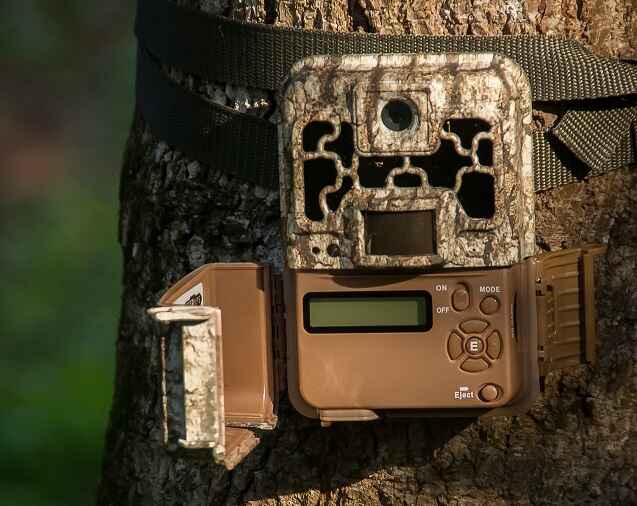
What is a Wildlife Camera?
A wildlife camera, also known as a trail camera, is a specialized camera designed to capture pictures and videos of animals in their natural habitat. These cameras are typically small, portable, and easy to set up, making them ideal for outdoor use. They are equipped with motion sensors that detect movement and trigger the camera to take a picture or video.
Types of Wildlife Cameras
- Infrared Cameras: These cameras use infrared technology to capture images in low-light conditions, making them ideal for nighttime photography.
- Wireless Cameras: Allows you to remotely access your footage using a smartphone app or other device.
- Cellular Cameras: These cameras use cellular technology to transmit your footage to a remote server, allowing you to access it from anywhere with an internet connection.
Top 5 Best Trail Cameras in 2023
Vikeri 4K 32MP Trail Camera
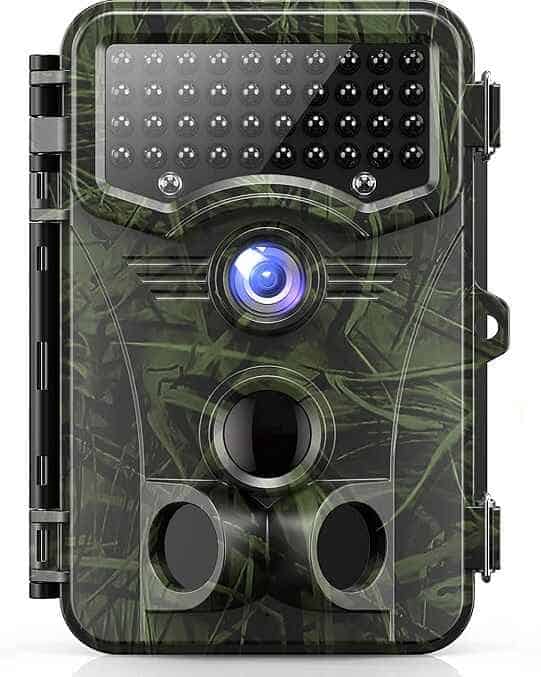
The Vikeri 4K 32MP Trail Camera is a high-quality game camera that captures ultra-clear 32MP pictures and 4k videos. With a trigger speed of 0.1 seconds, it can take clear photos of high-speed moving objects. The camera also has 40 no glow infrared LEDs that allow it to capture clear images at night without disturbing animals.
In addition, the camera is designed with an IP66 waterproof and dustproof feature that allows it to work well even in harsh weather conditions. The camera can work normally from -22 °F to 158 °F and has a standby time of up to 180 days. The camera is easy to install and operate, and comes with a newer bracket that makes it easier to fix compared to traditional brackets.
This camera is ideal for a variety of applications such as wildlife observation, hunting, home/property security, and farm monitoring. It supports SD cards, CLASS 10, less than 256GB and requires a minimum of 4 AA batteries to operate. The camera creates video in AVI file format which may not be supported by standard Windows video, so we recommend using VLC or KM player.
Overall, the Vikeri 4K 32MP Trail Camera is a great choice for anyone looking for a reliable game camera that can capture high-quality pictures and videos in any weather condition.
TACTACAM Reveal X PRO Cellular Trail Camera
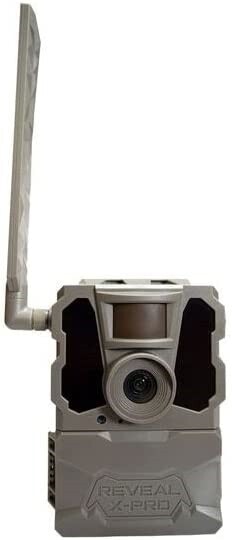
The Reveal X Pro Cellular Trail Camera from TACTACAM is a high-tech device designed for wildlife enthusiasts, hunters, and security professionals. With its advanced features, the camera is capable of capturing high-quality images and videos of wildlife and monitoring property. The camera has a 16-megapixel sensor and a sub 1/2-second trigger speed, ensuring that every moment is captured.
It has a built-in cellular modem, which allows remote access to images and videos using the Reveal app. The camera’s motion detection system is adjustable, using a PIR sensor, and can send real-time notifications. The Reveal X Pro is easy to set up with an intuitive interface and pre-activated SIM card. The camera has a long-lasting battery life, and it is also weather-resistant, with a camouflaged exterior for discreet placement.
And another feature is a Time Lapse mode, making it ideal for tracking weather, landscape, and wildlife activity. With these features, the Reveal X Pro is a great investment for anyone who needs to monitor wildlife or property.
SPYPOINT Link-Micro-S-LTE Trail Camera

The SPYPOINT Link-Micro-S-LTE Trail Camera is a top-of-the-line cellular camera designed for hunters and wildlife enthusiasts. One of the standout features of this camera is its integrated solar panel technology, which charges the included LIT-10 rechargeable lithium battery pack. This not only saves you money on batteries but also reduces your impact on the environment.
The camera’s advanced cellular technology allows you to receive real-time notifications whenever the camera detects motion, and you can access your images and videos remotely using the SPYPOINT app. The camera also offers easy-to-understand photo transmission plans, including a $10 truly unlimited plan, making it an affordable and convenient option for all users.
This is the smallest solar cellular trail camera on the market, making it easy to set up and use, even for those new to cellular trail camera technology. With Full-HD images and video, you can see exactly what is lurking in the shadows without ever having to go to the camera to recover your card. Overall, the SPYPOINT Link-Micro-S-LTE Trail Camera is an excellent choice for anyone looking for a high-quality cellular camera with advanced features and easy-to-use technology.
VOOPEAK Solar Powered Trail Camera WiFi 4K
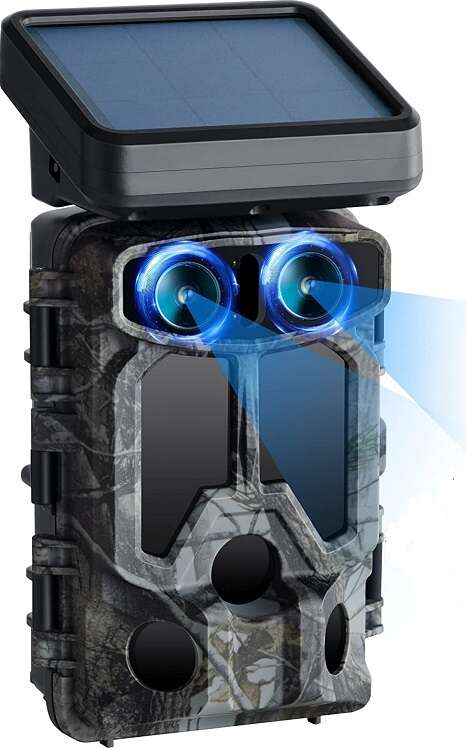
The VOOPEAK Solar Powered Trail Camera WiFi 4K is an innovative and high-tech trail camera with dual lenses that provide clearer and more realistic images. During the day, the high-sensitivity Sony IMX458 Starvis image sensor with a 6-layer glass lens captures sharp images.
At night, the trail camera switches to a dedicated 8-megapixel night vision lens that works with an F1.6 large aperture lens and Novatek 96670 image denoising technology chip to produce much clearer photos and videos. The starlight night vision lens can capture clear color pictures and videos even in low light environments, and it has a longer irradiation distance compared to ordinary infrared cameras.
The camera is solar-powered, and it can also be powered by dry batteries. It has a built-in WiFi signal, and you can download the free app on your mobile phone to view or download photos and videos, as well as adjust the trail camera settings. The camera records advanced H.265 videos with sound, which are clearer, smoother, and save up to 80% memory card storage compared to MJPG or AVI videos. You can choose from a variety of video resolutions, including 4K@30fps, 2.7K@30fps, 2K@60fps, 2K@30fps, 1296P@30fps, 1080P@60fps, and 1080P@30fps.
Overall, the VOOPEAK Solar Powered Trail Camera WiFi 4K is a great option for those who want a high-quality trail camera that can capture clear images and videos day or night. Its solar-powered and WiFi-enabled features make it easy to use and environmentally friendly.
How Do Wildlife Cameras Work?
Wildlife cameras work by using motion sensors to detect movement in their field of view. When motion is detected, the camera is triggered to take a picture or video. Some cameras also include sound sensors that can detect animal noises, such as birds chirping or deer snorting.
The Benefits of Using Wildlife Cameras
- Learning about animal behavior: By reviewing your footage, you can learn more about the behavior patterns of the animals in your area.
- Monitoring wildlife populations: Wildlife cameras can be used to monitor the health and population of certain species.
- Improving your photography skills: Using a wildlife camera can help you develop your photography skills by providing unique opportunities to capture stunning images of animals.
Factors to Consider When Choosing a Wildlife Camera
- Resolution: The resolution of the camera will determine the quality of the images and videos it produces. Look for a camera with a high resolution for the best results.
- Battery Life: Trail cameras typically run on batteries, so it’s important to choose one with a long battery life. This will ensure that your camera stays powered up for extended periods of time.
- Trigger Speed: The trigger speed of a wildlife camera is the time it takes for the camera to capture an image or video once motion is detected. Look for a camera with a fast trigger speed for the best results.
- Memory Capacity: Game cameras typically use memory cards to store footage. Make sure to choose a camera with enough memory to store all of your footage.
Setting Up Your Camera
- Choose a good location: Look for a location where animals are known to frequent, such as a watering hole or game trail.
- Mount the camera properly: Make sure to mount the camera securely to a tree or other stable surface.
- Position the camera correctly: Position the camera at the correct height and angle to capture the best footage.
Where to Place Your Camera
- Near water sources: Animals need water to survive, so placing your camera near a water source, such as a river or watering hole, is a great way to capture images of wildlife.
- On game trails: Game trails are paths that animals use to move through their habitat. Placing your camera on a game trail is a great way to capture images of animals as they move through the area.
- Near food sources: Placing your camera near a food source, such as a berry bush or fruit tree, is a great way to capture images of animals as they forage for food.
Tips for Using Your Wildlife Camera
- Check your camera regularly: Check your camera regularly to ensure that it is still functioning properly and that the batteries are not dead.
- Use scent control: Avoid touching your camera with your bare hands, as the scent can scare away animals. Use scent control products to minimize your scent.
- Be patient: Wildlife photography requires patience, so be prepared to wait for hours or even days to capture the perfect shot.
How to Retrieve Your Footage
- Remove the memory card: Remove the memory card from the camera and insert it into your computer or other device.
- Review your footage: Review your footage to see what you’ve captured.
- Save your footage: Save your footage to your computer or other storage device for safekeeping.
What to Look For
- Animal behavior: Look for interesting or unusual behavior that you can use to learn more about the animals in your area.
- Image quality: Review the image quality to ensure that your camera is functioning properly and that the images are clear and focused.
- Footage duration: Review the duration of the footage to see how long the animals stayed in the area.
Conclusion
Using a trail camera is a great way to capture stunning images of animals in their natural habitat. By choosing the right camera, setting it up properly and placing it in the right location, you can increase your chances of capturing great footage. Remember to be patient and check your camera regularly to ensure that it is functioning properly.
FAQs
How do I choose the right wildlife camera?
When choosing a wildlife camera, consider factors such as resolution, battery life, trigger speed, and memory capacity.
What is the best location for a trail camera?
The best location for a wildlife camera is where animals are known to frequent, such as near water sources, on game trails, or near food sources.
How often should I check my wildlife camera?
It’s important to check your wildlife camera regularly to ensure that it is still functioning properly and that the batteries are not dead. How often you check it will depend on the camera and your specific situation.
Can I use scent control products to minimize my scent on the camera?
Yes, using scent control products can help minimize your scent on the camera and reduce the risk of scaring away animals.
What should I look for when reviewing my game camera footage?
When reviewing your footage, look for interesting animal behavior, clear and focused images, and the duration of the footage to see how long the animals stayed in the area.

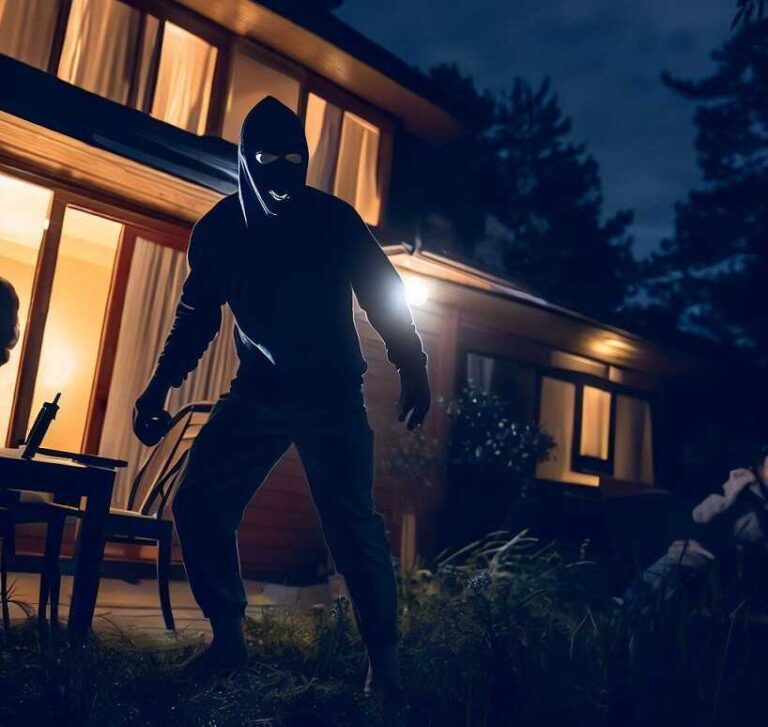


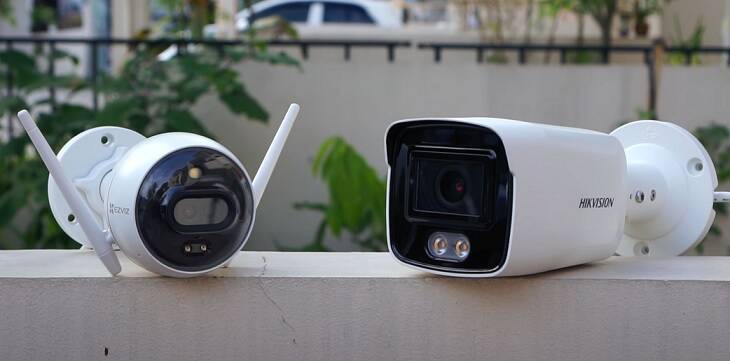
![How are security cameras helpful? [SOLVED] How are security cameras helpful? [SOLVED]](https://securitybros.com/wp-content/uploads/2024/02/ptz-security-camera-monitor-area.jpg)
